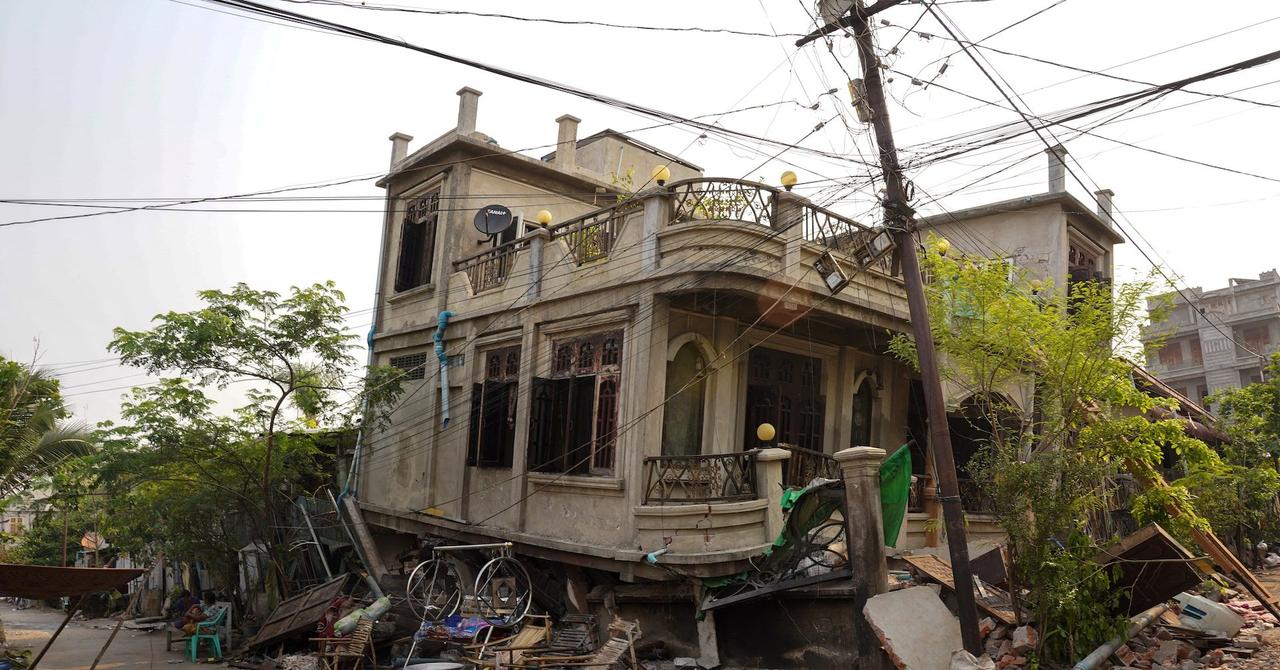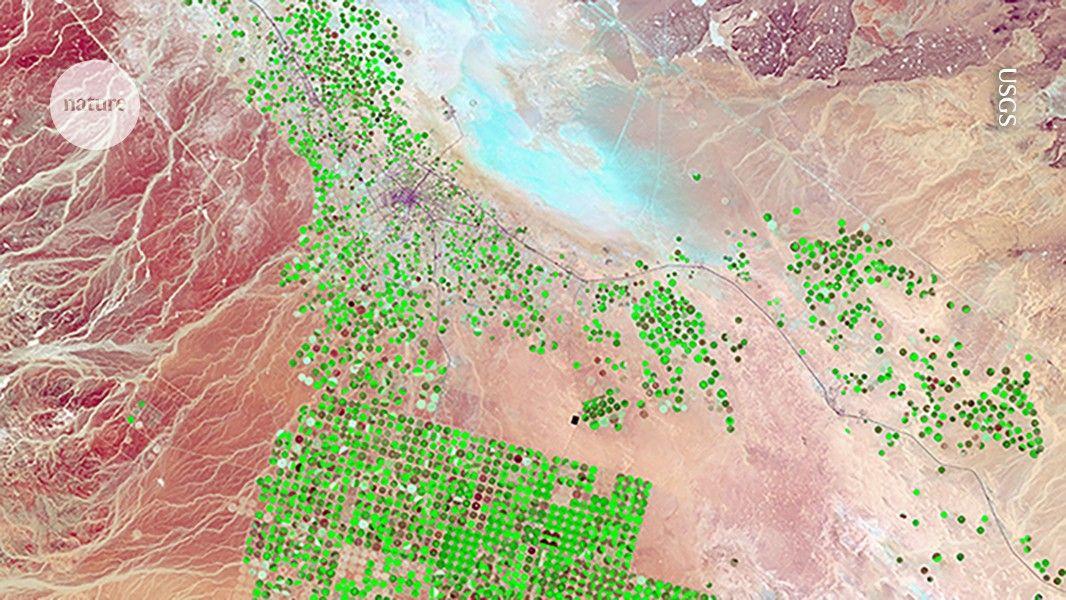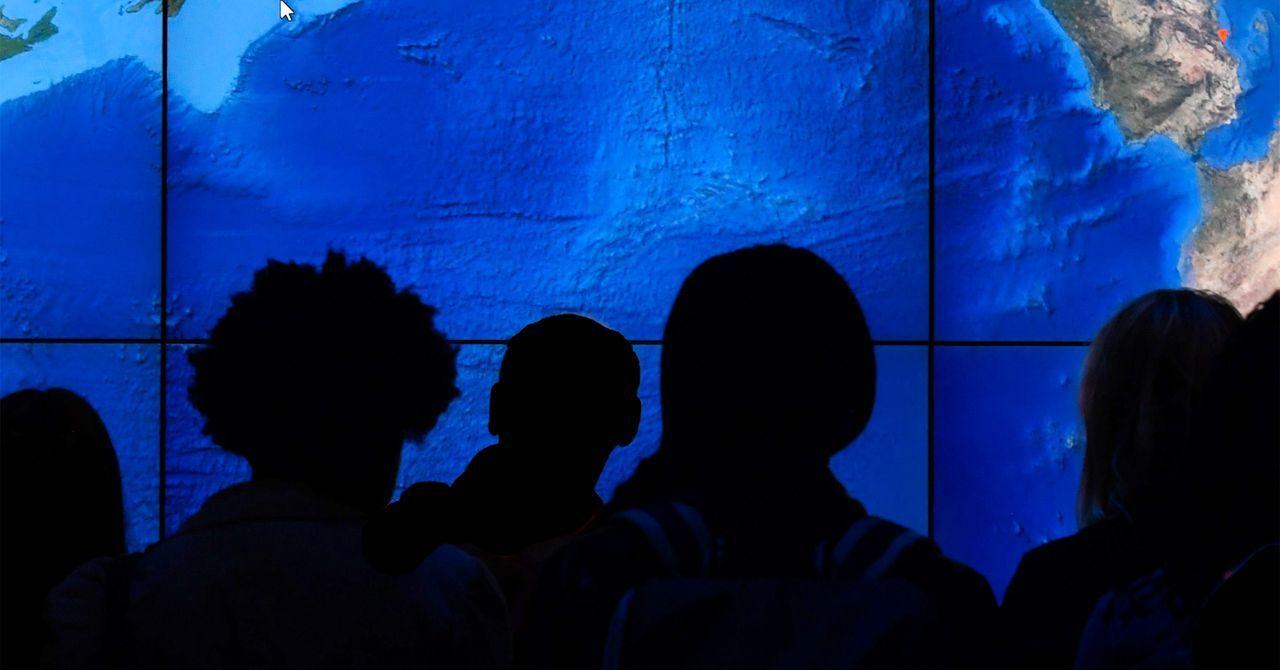AI and Satellite Technology Aid Disaster Response in Myanmar Earthquake
7 Sources
7 Sources
[1]
AI and satellites help aid workers respond to Myanmar earthquake damage
Just after sunrise on Saturday, a satellite set its long-range camera on the city of Mandalay in Myanmar, not far from the epicenter of Friday's 7.7 magnitude earthquake that devastated the Southeast Asian county's second-largest city. The mission was to capture images that, combined with artificial intelligence technology, could help relief organizations quickly assess how many buildings had collapsed or were heavily damaged and where helpers most needed to go. At first, the high-tech computer vision approach wasn't working. "The biggest challenge in this particular case was the clouds," said Microsoft's chief data scientist, Juan Lavista Ferres. "There's no way to see through clouds with this technology." The clouds eventually moved and it took a few more hours for another satellite from San Francisco-based Planet Labs to capture the aerial pictures and send them to Microsoft's philanthropic AI for Good Lab. By then it was already about 11 p.m. Friday at Microsoft headquarters in Redmond, Washington. A group of Microsoft workers was ready and waiting for the data. The AI for Good lab has done this kind of AI-assisted damage assessment before, tracking the flooding that devastated Libya in 2023 or this year's wildfires in Los Angeles. But rather than rely on a standard AI computer vision model that could run any visual data, they had to build a customized version specific to Mandalay. "The Earth is too different, the natural disasters are too different and the imagery we get from satellites is just too different to work in every situation," Lavista Ferres said. For instance, he said, while fires spread in fairly predictable ways, "an earthquake touches the whole city" and it can be harder to know in the immediate aftermath where help is needed. Once the AI analysis was complete, it showed 515 buildings in Mandalay with 80% to 100% damage and another 1,524 with between 20% and 80% damage. That showed the widespread gravity of the disaster, but, just as important, it helps pinpoint specific locations of damage. "This is critical information for teams on the ground," Lavista Ferres said. Microsoft cautioned that it "should serve as a preliminary guide and will require on-the-ground verification for a complete understanding." But in the meantime, the tech company has shared the analysis with aid groups such as the Red Cross.
[2]
AI and satellites help aid workers respond to Myanmar earthquake damage
Just after sunrise on Saturday, a satellite set its long-range camera on the city of Mandalay in Myanmar, not far from the epicenter of Friday's 7.7 magnitude earthquake that devastated the Southeast Asian country's second-largest city. The mission was to capture images that, combined with artificial intelligence technology, could help relief organizations quickly assess how many buildings had collapsed or were heavily damaged and where helpers most needed to go. At first, the high-tech computer vision approach wasn't working. "The biggest challenge in this particular case was the clouds," said Microsoft's chief data scientist, Juan Lavista Ferres. "There's no way to see through clouds with this technology." The clouds eventually moved and it took a few more hours for another satellite from San Francisco-based Planet Labs to capture the aerial pictures and send them to Microsoft's philanthropic AI for Good Lab. By then it was already about 11 p.m. Friday at Microsoft headquarters in Redmond, Washington. A group of Microsoft workers was ready and waiting for the data. The AI for Good lab has done this kind of AI-assisted damage assessment before, tracking Libya's catastrophic flooding in 2023 or this year's wildfires in Los Angeles. But rather than rely on a standard AI computer vision model that could run any visual data, they had to build a customized version specific to Mandalay. "The Earth is too different, the natural disasters are too different and the imagery we get from satellites is just too different to work in every situation," Lavista Ferres said. For instance, he said, while fires spread in fairly predictable ways, "an earthquake touches the whole city" and it can be harder to know in the immediate aftermath where help is needed. Once the AI analysis was complete, it showed 515 buildings in Mandalay with 80% to 100% damage and another 1,524 with between 20% and 80% damage. That showed the widespread gravity of the disaster, but, just as important, it helps pinpoint specific locations of damage. "This is critical information for teams on the ground," Lavista Ferres said. Microsoft cautioned that it "should serve as a preliminary guide and will require on-the-ground verification for a complete understanding." But in the meantime, the tech company has shared the analysis with aid groups such as the Red Cross. Planet Labs says its satellites -- it has 15 of them orbiting the Earth -- have now photographed roughly a dozen locations in Myanmar and Thailand since Friday's quake. © 2025 The Associated Press. All rights reserved. This material may not be published, broadcast, rewritten or redistributed without permission.
[3]
AI and satellites help aid workers respond to Myanmar earthquake damage
Just after sunrise on Saturday, a satellite set its long-range camera on the city of Mandalay in Myanmar, not far from the epicenter of Friday's 7.7 magnitude earthquake that devastated the Southeast Asian county's second-largest city. The mission was to capture images that, combined with artificial intelligence technology, could help relief organizations quickly assess how many buildings had collapsed or were heavily damaged and where helpers most needed to go. At first, the high-tech computer vision approach wasn't working. "The biggest challenge in this particular case was the clouds," said Microsoft's chief data scientist, Juan Lavista Ferres. "There's no way to see through clouds with this technology." The clouds eventually moved and it took a few more hours for another satellite from San Francisco-based Planet Labs to capture the aerial pictures and send them to Microsoft's philanthropic AI for Good Lab. By then it was already about 11 p.m. Friday at Microsoft headquarters in Redmond, Washington. A group of Microsoft workers was ready and waiting for the data. The AI for Good lab has done this kind of AI-assisted damage assessment before, tracking the flooding that devastated Libya in 2023 or this year's wildfires in Los Angeles. But rather than rely on a standard AI computer vision model that could run any visual data, they had to build a customized version specific to Mandalay. "The Earth is too different, the natural disasters are too different and the imagery we get from satellites is just too different to work in every situation," Lavista Ferres said. For instance, he said, while fires spread in fairly predictable ways, "an earthquake touches the whole city" and it can be harder to know in the immediate aftermath where help is needed. Once the AI analysis was complete, it showed 515 buildings in Mandalay with 80% to 100% damage and another 1,524 with between 20% and 80% damage. That showed the widespread gravity of the disaster, but, just as important, it helps pinpoint specific locations of damage. "This is critical information for teams on the ground," Lavista Ferres said. Microsoft cautioned that it "should serve as a preliminary guide and will require on-the-ground verification for a complete understanding." But in the meantime, the tech company has shared the analysis with aid groups such as the Red Cross.
[4]
AI and Satellites Help Aid Workers Respond to Myanmar Earthquake Damage
Just after sunrise on Saturday, a satellite set its long-range camera on the city of Mandalay in Myanmar, not far from the epicenter of Friday's 7.7 magnitude earthquake that devastated the Southeast Asian county's second-largest city. The mission was to capture images that, combined with artificial intelligence technology, could help relief organizations quickly assess how many buildings had collapsed or were heavily damaged and where helpers most needed to go. At first, the high-tech computer vision approach wasn't working. "The biggest challenge in this particular case was the clouds," said Microsoft's chief data scientist, Juan Lavista Ferres. "There's no way to see through clouds with this technology." The clouds eventually moved and it took a few more hours for another satellite from San Francisco-based Planet Labs to capture the aerial pictures and send them to Microsoft's philanthropic AI for Good Lab. By then it was already about 11 p.m. Friday at Microsoft headquarters in Redmond, Washington. A group of Microsoft workers was ready and waiting for the data. The AI for Good lab has done this kind of AI-assisted damage assessment before, tracking the flooding that devastated Libya in 2023 or this year's wildfires in Los Angeles. But rather than rely on a standard AI computer vision model that could run any visual data, they had to build a customized version specific to Mandalay. "The Earth is too different, the natural disasters are too different and the imagery we get from satellites is just too different to work in every situation," Lavista Ferres said. For instance, he said, while fires spread in fairly predictable ways, "an earthquake touches the whole city" and it can be harder to know in the immediate aftermath where help is needed. Once the AI analysis was complete, it showed 515 buildings in Mandalay with 80% to 100% damage and another 1,524 with between 20% and 80% damage. That showed the widespread gravity of the disaster, but, just as important, it helps pinpoint specific locations of damage. "This is critical information for teams on the ground," Lavista Ferres said. Microsoft cautioned that it "should serve as a preliminary guide and will require on-the-ground verification for a complete understanding." But in the meantime, the tech company has shared the analysis with aid groups such as the Red Cross. Copyright 2025 The Associated Press. All rights reserved. This material may not be published, broadcast, rewritten or redistributed.
[5]
AI and satellites help aid workers respond to Myanmar earthquake damage
The mission was to capture images that, combined with artificial intelligence technology, could help relief organizations quickly assess how many buildings had collapsed or were heavily damaged and where helpers most needed to go.Just after sunrise on Saturday, a satellite set its long-range camera on the city of Mandalay in Myanmar, not far from the epicenter of Friday's 7.7 magnitude earthquake that devastated the Southeast Asian country's second-largest city. The mission was to capture images that, combined with artificial intelligence technology, could help relief organizations quickly assess how many buildings had collapsed or were heavily damaged and where helpers most needed to go. At first, the high-tech computer vision approach wasn't working. "The biggest challenge in this particular case was the clouds," said Microsoft's chief data scientist, Juan Lavista Ferres. "There's no way to see through clouds with this technology." The clouds eventually moved and it took a few more hours for another satellite from San Francisco-based Planet Labs to capture the aerial pictures and send them to Microsoft's philanthropic AI for Good Lab. By then it was already about 11 p.m. Friday at Microsoft headquarters in Redmond, Washington. A group of Microsoft workers was ready and waiting for the data. The AI for Good lab has done this kind of AI-assisted damage assessment before, tracking Libya's catastrophic flooding in 2023 or this year's wildfires in Los Angeles. But rather than rely on a standard AI computer vision model that could run any visual data, they had to build a customized version specific to Mandalay. "The Earth is too different, the natural disasters are too different and the imagery we get from satellites is just too different to work in every situation," Lavista Ferres said. For instance, he said, while fires spread in fairly predictable ways, "an earthquake touches the whole city" and it can be harder to know in the immediate aftermath where help is needed. Once the AI analysis was complete, it showed 515 buildings in Mandalay with 80% to 100% damage and another 1,524 with between 20% and 80% damage. That showed the widespread gravity of the disaster, but, just as important, it helps pinpoint specific locations of damage. "This is critical information for teams on the ground," Lavista Ferres said. Microsoft cautioned that it "should serve as a preliminary guide and will require on-the-ground verification for a complete understanding." But in the meantime, the tech company has shared the analysis with aid groups such as the Red Cross. Planet Labs says its satellites - it has 15 of them orbiting the Earth - have now photographed roughly a dozen locations in Myanmar and Thailand since Friday's quake.
[6]
AI and satellites help aid workers respond to Myanmar earthquake damage - VnExpress International
The mission was to capture images that, combined with artificial intelligence technology, could help relief organizations quickly assess how many buildings had collapsed or were heavily damaged and where helpers most needed to go. At first, the high-tech computer vision approach wasn't working. "The biggest challenge in this particular case was the clouds," said Microsoft's chief data scientist, Juan Lavista Ferres. "There's no way to see through clouds with this technology." The clouds eventually moved and it took a few more hours for another satellite from San Francisco-based Planet Labs to capture the aerial pictures and send them to Microsoft's philanthropic AI for Good Lab. By then it was already about 11 p.m. Friday at Microsoft headquarters in Redmond, Washington. A group of Microsoft workers was ready and waiting for the data. The AI for Good lab has done this kind of AI-assisted damage assessment before, tracking Libya's catastrophic flooding in 2023 or this year's wildfires in Los Angeles. But rather than rely on a standard AI computer vision model that could run any visual data, they had to build a customized version specific to Mandalay. "The Earth is too different, the natural disasters are too different and the imagery we get from satellites is just too different to work in every situation," Lavista Ferres said. For instance, he said, while fires spread in fairly predictable ways, "an earthquake touches the whole city" and it can be harder to know in the immediate aftermath where help is needed. Once the AI analysis was complete, it showed 515 buildings in Mandalay with 80% to 100% damage and another 1,524 with between 20% and 80% damage. That showed the widespread gravity of the disaster, but, just as important, it helps pinpoint specific locations of damage. "This is critical information for teams on the ground," Lavista Ferres said. Microsoft cautioned that it "should serve as a preliminary guide and will require on-the-ground verification for a complete understanding." But in the meantime, the tech company has shared the analysis with aid groups such as the Red Cross. Planet Labs says its satellites -- it has 15 of them orbiting the Earth -- have now photographed roughly a dozen locations in Myanmar and Thailand since Friday's quake.
[7]
AI and satellites help aid workers respond to Myanmar earthquake damage
Just after sunrise on Saturday, a satellite set its long-range camera on the city of Mandalay in , not far from the epicenter of Friday's 7.7 magnitude earthquake that devastated the Southeast Asian county's second-largest city. The mission was to capture images that, combined with artificial intelligence technology, could help relief organizations quickly assess how many buildings had collapsed or were heavily damaged and where helpers most needed to go. At first, the high-tech computer vision approach wasn't working. "The biggest challenge in this particular case was the clouds," said Microsoft's chief data scientist, . "There's no way to see through clouds with this technology." The clouds eventually moved and it took a few more hours for another satellite from -based to capture the aerial pictures and send them to 's philanthropic AI for . By then it was already about at headquarters in . A group of workers was ready and waiting for the data. The AI for Good lab has done this kind of AI-assisted damage assessment before, tracking the flooding that devastated in 2023 or this year's wildfires in . But rather than rely on a standard AI computer vision model that could run any visual data, they had to build a customized version specific to Mandalay. "The Earth is too different, the natural disasters are too different and the imagery we get from satellites is just too different to work in every situation," said. For instance, he said, while fires spread in fairly predictable ways, "an earthquake touches the whole city" and it can be harder to know in the immediate aftermath where help is needed. Once the AI analysis was complete, it showed 515 buildings in Mandalay with 80% to 100% damage and another 1,524 with between 20% and 80% damage. That showed the widespread gravity of the disaster, but, just as important, it helps pinpoint specific locations of damage. "This is critical information for teams on the ground," said. cautioned that it "should serve as a preliminary guide and will require on-the-ground verification for a complete understanding." But in the meantime, the tech company has shared the analysis with aid groups such as the . Copyright 2025 The Associated Press. All rights reserved. This material may not be published, broadcast, rewritten or redistributed without permission. , source
Share
Share
Copy Link
Microsoft's AI for Good Lab utilizes satellite imagery and artificial intelligence to assess building damage in Mandalay, Myanmar, following a 7.7 magnitude earthquake, providing critical information for relief efforts.

AI and Satellite Technology Combine for Rapid Disaster Assessment
In the wake of a devastating 7.7 magnitude earthquake that struck Mandalay, Myanmar's second-largest city, Microsoft's AI for Good Lab has demonstrated the power of combining satellite imagery with artificial intelligence to aid disaster response efforts
1
.Overcoming Initial Challenges
The mission to capture post-earthquake images faced an immediate obstacle: cloud cover. Juan Lavista Ferres, Microsoft's chief data scientist, explained, "The biggest challenge in this particular case was the clouds. There's no way to see through clouds with this technology"
2
. However, as the clouds dissipated, San Francisco-based Planet Labs successfully captured aerial photographs, which were then transmitted to Microsoft's AI for Good Lab for analysis.Customized AI Model for Mandalay
Unlike previous disaster assessments, such as the 2023 Libya floods or recent Los Angeles wildfires, the Mandalay earthquake required a tailored approach. Lavista Ferres emphasized the need for customization: "The Earth is too different, the natural disasters are too different and the imagery we get from satellites is just too different to work in every situation"
3
.AI Analysis Reveals Extent of Damage
The AI-powered analysis yielded crucial insights into the earthquake's impact:
- 515 buildings suffered 80% to 100% damage
- 1,524 buildings experienced between 20% and 80% damage
This data not only illustrated the widespread nature of the disaster but also pinpointed specific locations requiring immediate attention
4
.Critical Information for Ground Teams
Lavista Ferres underscored the significance of this rapid assessment: "This is critical information for teams on the ground." The AI-generated insights provide relief organizations with a preliminary guide for allocating resources and prioritizing response efforts
5
.Related Stories
Collaboration with Aid Organizations
While cautioning that on-ground verification is necessary for a comprehensive understanding, Microsoft has shared its analysis with aid groups, including the Red Cross. This collaboration demonstrates the potential for tech companies to contribute meaningfully to humanitarian efforts in times of crisis.
Expanding Coverage
Planet Labs, the satellite imagery provider, has reported that its fleet of 15 Earth-orbiting satellites has now captured images of approximately a dozen locations across Myanmar and Thailand since the earthquake struck, further expanding the scope of the damage assessment
2
.References
Summarized by
Navi
Related Stories
AI Accelerates Landslide Detection for Rapid Disaster Response
23 Jul 2025•Technology

Internet Shutdowns Hamper Earthquake Aid Response in Myanmar, AI and Satellite Tech Offer Limited Solutions
10 Apr 2025•Technology

Google's AlphaEarth Foundations: AI Model Maps Earth in Unprecedented Detail
31 Jul 2025•Technology

Recent Highlights
1
OpenAI releases GPT-5.2 AI model after code red memo targets Google's Gemini 3 threat
Technology

2
Disney invests $1 billion in OpenAI, licenses 200+ characters for Sora video generator
Technology

3
Disney accuses Google of massive copyright infringement through AI-generated character images
Policy and Regulation





